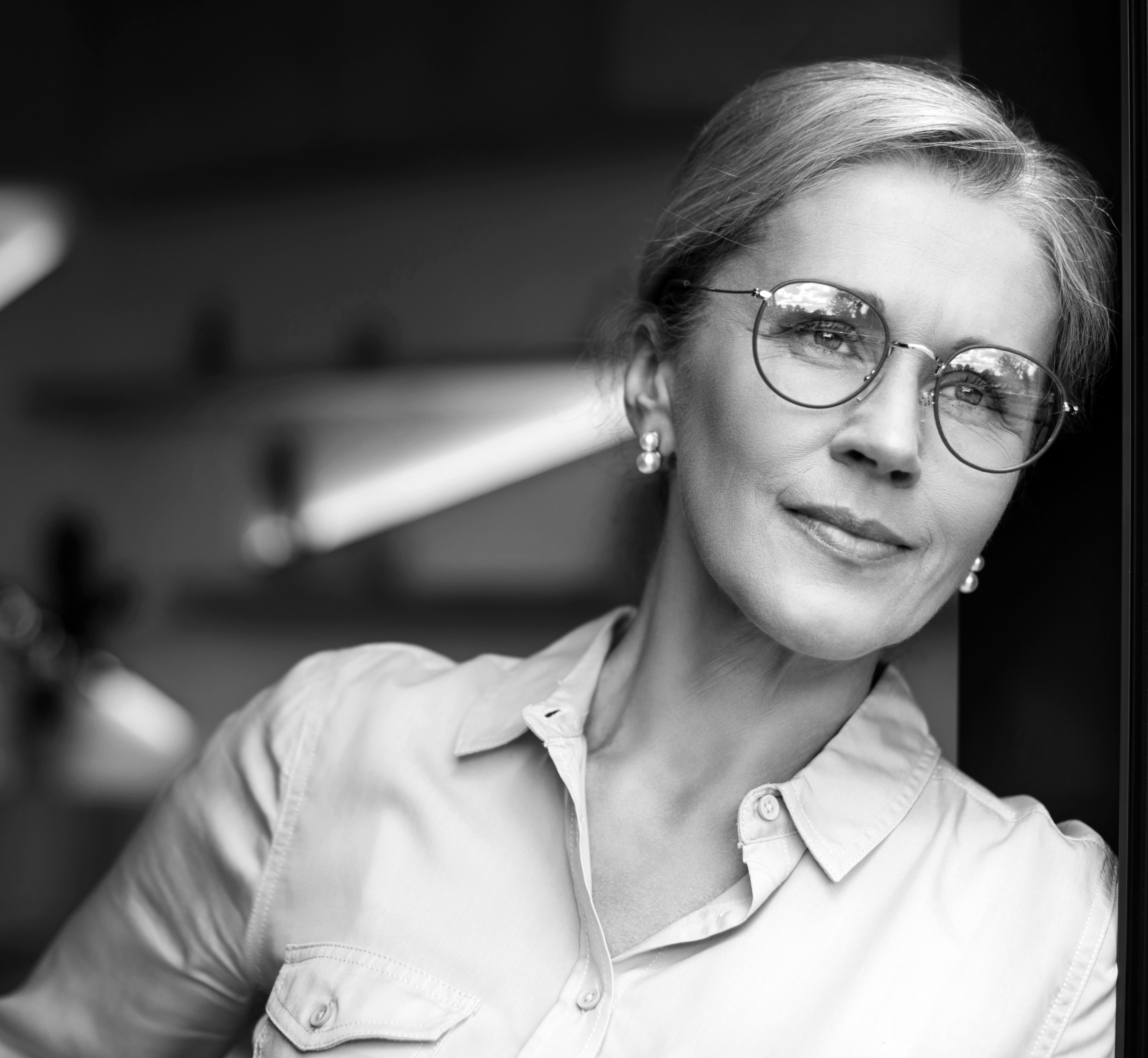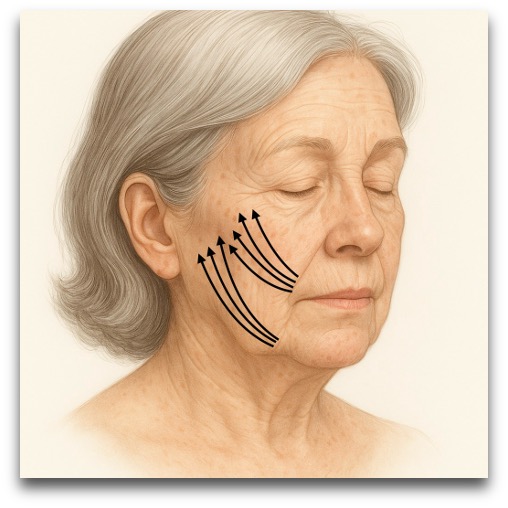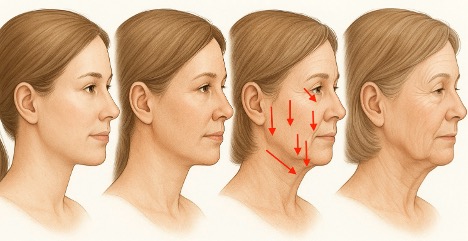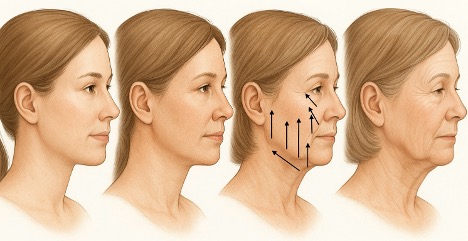The Evolution of the DeepFrame Facelift: Redefining Deep Plane Rejuvenation

Deep plane face lifts aren't exactly new. They've been around for a while. But lately, there's been a real resurgence in the world of people who want to look more beautiful without looking... different. You've probably noticed it: celebrities appearing refreshed without that inflated look, brighter without being overdone. The secret? They're getting their work done earlier and, honestly, better than before.
For years, "deep plane" has been the catch phrase everyone wants to hear, touted as the best way to get natural-looking results. And while that's true to an extent, here's the thing: saying a facelift is "deep plane" is like saying a piece of art is a painting instead of a drawing. That doesn't tell you much about the actual quality, does it? Because if you hand a paintbrush to someone without talent, experience, and understanding of how to use their tools, that painting isn't going to look more realistic than a skilled drawing. Not all deep plane facelifts are created equal.
Here's what Dr. Lowenstein would tell you: just as a master of drawing can produce a lifelike piece of art as well as a master painter, a plastic surgeon who has truly mastered the manipulation of the SMAS will get as good a result as a plastic surgeon who has mastered the deep plane facelift. It's about mastery of the technique, not just the technique itself. But Dr. Lowenstein has taken things a step further with his version, the DeepFrame Facelift. It's his evolution of the deep plane technique, and he'll tell you that the direction of tension is as important a component of the technique as the plane of dissection itself.
What Is a DeepFrame Facelift?
The DeepFrame Facelift is Dr. Lowenstein's next-generation take on facial rejuvenation. Think of it as the deep plane technique refined and extended to address aging where it actually starts: at the structural level. Instead of just tightening the surface, this approach uses precise, multidirectional vectors to reposition facial tissues within the SMAS and deep framework layers. The goal? Lifting everything back toward where it was in your youth, not just pulling it tight.
What you get is a refreshed, elegant look that lasts. And more importantly, one that actually looks like you. Your features are enhanced, not altered. Your unique expression stays intact.
The DeepFrame Facelift builds on decades of surgical refinement and deep plane principles, but to really understand why it works the way it does, it helps to look back at how facial surgery has evolved over time.
How the Deep Plane Facelift Evolved Into the DeepFrame Technique
Deep plane facelifts have been having a moment lately among people seeking refined, natural rejuvenation. Unlike older facelift techniques that mostly just tightened the skin, the deep plane approach works beneath the SMAS (that's the Superficial Musculoaponeurotic System) to actually reposition the deeper tissues responsible for facial sagging. This was a real turning point in facial surgery. Less focus on pulling the skin, more focus on restoring the natural contours and proportions of the face.
That's why celebrities and public figures who used to look "overdone" now just look subtly refreshed. Modern deep plane surgery has proven that the real artistry is in understanding anatomy, balance, and how structure and movement work together. But here's where things get tricky: as the term "deep plane facelift" became more popular, it also became more loosely used. Just slapping that label on a procedure doesn't guarantee excellence. It's like we said before: owning a paintbrush doesn't make you an artist.
Dr. Lowenstein is clear about this. The difference between a good facelift and a truly transformative one isn't just about the plane of dissection. It's about the direction of the lift. His DeepFrame Facelift takes the foundation of deep plane technique and refines how and where those lifting forces (called vectors) are applied throughout the face. By aligning these forces with the natural geometry of aging, the DeepFrame approach doesn't just tighten features. It restores each one to its original position.
To really get what sets the DeepFrame Facelift apart, you need to understand the mechanics. How do lift direction, gravity, and geometry work together? Once you see that, it becomes clear why adjusting the vectors of tension, rather than just the layer of dissection, creates such harmonious, lasting results.
The Science Behind the DeepFrame Facelift
At its heart, the DeepFrame Facelift is equal parts geometry and artistry. Dr. Lowenstein's approach is built on understanding how gravity, anatomy, and directional force interact over time. Master those relationships, and you can reposition facial structures back to where they started instead of just tightening what's fallen.
Understanding Facial Vectors
Aging follows some pretty predictable physical laws. In geometry, a vector is a direction of force. And in the human face, gravity's vector is always pulling downward. As the years go by, that steady pull creates the changes we all recognize: cheeks flatten, jowls descend, the neck loses definition.
Older facelift methods worked mainly at the surface, pulling the skin diagonally or sideways. The DeepFrame Facelift does something different. It applies multiple lift vectors, each one perpendicular to the way gravity has acted on that particular region. So:
Jowls that have descended from the jawline? They're repositioned upward.
Nasolabial folds that deepen along the mouth? They're lifted at an angle.
Neck tissues that droop with loose muscles? They're tightened perpendicular to those muscles.
By countering gravity's pull in the exact opposite direction, Dr. Lowenstein restores the face's youthful framework and balance. He's not just stretching skin. He's returning structure.
The easiest way to see how Dr. Lowenstein's DeepFrame Facelift compares to the classic deep plane lift is to look at the following diagrams. In the first diagram, reproduced from the website of a popular Beverly Hills deep plane plastic surgeon, we see the direction that this surgeon promotes for moving the SMAS and deep tissue.

Alternatively, when we examine the direction of lift, or vectors of tension, performed during Dr. Lowenstein's DeepFrame Facelift, we see that the different areas of aging require different directions of lift to restore the natural framework of the face.

If we examine these vectors in the context of aging, it becomes easier to see the progression of tissue sagging and the directions that tissue falls.

Why Direction of Lift Matters
Even within deep plane surgery, the direction of tension can make or break whether results look natural or artificial. Traditional deep plane facelifts often rely on a single sweeping diagonal lift across the face. Sure, that corrects sagging, but it can also create this uniform tightness that doesn't quite look right.
The DeepFrame Facelift improves on this by using varied, customized lift directions. Different regions of the face (the midface, jawline, and neck) each get their own vector of elevation. This multi-vector approach distributes tension more evenly, so tissues move naturally and age gracefully. The result? A smooth, undetectable rejuvenation that enhances your expression instead of changing it.
While it's natural to examine the aging progression from left to right, consider doing the opposite in the following diagrams. Look at the changes from right to left. Do the direction of the arrows, the vectors of lifting, make more sense in the first version as in the classic deep plane facelift, or in the second version as Dr. Lowenstein performs in his DeepFrame Facelift?


It's not difficult to see how tailoring of tension allows Dr. Lowenstein to lift tissues back towards their original framework. Returning fullness to the cheek without the use of fillers, the DeepFrame Facelift moves fallen tissue back toward the regions where they began in the youthful framework of the individual's face.
How Geometry Guides Natural Rejuvenation
Here's the guiding principle behind the DeepFrame Facelift: beauty follows structure, and structure follows geometry. By aligning each vector of lift with the natural angles of the face, Dr. Lowenstein restores harmony between form and movement. That's what allows patients to look refreshed instead of "operated on."
How the DeepFrame Facelift Works
The DeepFrame Facelift rejuvenates the face by restoring each region in the direction opposite to how it aged. Rather than tightening the skin in one sweeping motion, Dr. Lowenstein treats the face as a collection of interconnected structures. Each one has its own geometry, its own gravitational pull, and its own ideal vector of correction. This anatomy-driven technique creates smoother transitions between facial zones, so results look natural in motion and balanced at rest.
Step 1: Assessing the Framework of the Face
Every DeepFrame procedure starts with a detailed evaluation of your facial framework. That's the underlying system of muscles, ligaments, and connective tissue that determines how your face supports itself. Dr. Lowenstein maps how gravity has changed each region over time, identifying exactly where lift and support are needed most. This diagnostic stage makes sure the surgical plan follows your natural facial geometry instead of some cookie-cutter approach.
Step 2: Working Within the Deep Plane
Once the vectors of lift are determined, Dr. Lowenstein operates within the deep plane. That's the layer beneath the SMAS (Superficial Musculoaponeurotic System). By releasing and mobilizing this deeper layer instead of pulling on the skin, he repositions tissue as one integrated unit. This keeps the natural connection between your skin, muscle, and fat pads intact, restoring youthful fullness without overcorrection or distortion.
Step 3: Applying Tailored Lift Vectors
Using the pre-planned geometry, Dr. Lowenstein applies precise lift vectors that counter the direction of aging:
Cheeks and midface: lifted upward to restore volume and highlight the cheekbones.
Jowls and jawline: repositioned vertically to recreate definition and smooth marionette lines.
Nasolabial folds: corrected along an oblique path to soften the fold without flattening the face.
Neck and lower face: elevated perpendicular to the line of platysmal tension to refine the jaw-neck angle and reduce banding.
Each vector works on its own but also in harmony with the others, producing a multidimensional lift that restores balance and structure.
Step 4: Re-draping and Refinement
After repositioning the deep tissues, the skin is gently re-draped without tension. This step makes sure that surface smoothness follows the deeper correction instead of masking it. Incisions are closed carefully along natural creases and hairlines for a discreet finish.
Step 5: Natural Healing and Integration
Because the lift starts in the deep plane, healing happens uniformly without the surface strain you'd see with older techniques. Swelling goes down steadily as tissues settle into their rejuvenated framework. Over the following months, collagen remodeling further enhances firmness and elasticity, revealing a refreshed appearance that looks effortless and lasting.
By combining geometric precision with aesthetic intuition, Dr. Lowenstein's DeepFrame Facelift redefines what a modern facelift can achieve. Each procedure is individually mapped to your anatomy, making sure that the direction of every lift, the depth of every adjustment, and the balance of every contour work together. The result isn't just a younger version of your face. It's the authentic version, restored to its natural framework.
Because of this highly personalized approach, the ideal candidates for the DeepFrame Facelift are those who want rejuvenation that enhances rather than changes who they are.
Who Is a Candidate for a DeepFrame Facelift
The DeepFrame Facelift is designed for patients who want to look refreshed, not altered. It's ideal for people experiencing visible signs of aging in the midface, jawline, and neck who value natural movement and structural balance over surface tightening or volume-heavy results.
During your consultation, Dr. Lowenstein carefully evaluates your anatomy, how much tissue descent you have, and your facial symmetry to figure out whether this advanced approach aligns with your goals and health profile.
Ideal Age Range and Timing
Most candidates for the DeepFrame Facelift are in their 40s to 70s. That's when gravity and time have started to noticeably affect facial support structures. Patients in their 40s often pursue the procedure to address early jowling or midface descent before things get too advanced. Those in their 50s to 70s typically want deeper rejuvenation of the cheeks, jawline, and neck.
That said, chronological age isn't as important as biological aging. Dr. Lowenstein focuses on your skin quality, muscle tone, and overall health rather than a specific number.
A Desire for Natural, Lasting Results
The best candidates want to look like themselves, just younger and more rested. Unlike surface-level techniques or filler-based approaches, the DeepFrame Facelift restores your own tissue to its youthful position without distorting your facial proportions.
Patients who prefer subtle, enduring results instead of temporary fixes or an overfilled look find the DeepFrame technique particularly appealing.
Good Overall Health and Lifestyle
Strong candidates are in good general health, maintain a stable weight, and don't smoke. Smoking and certain medical conditions can mess with blood flow and healing, so optimizing your overall wellness before surgery helps support the best results and recovery.
Dr. Lowenstein's comprehensive consultation process includes a full review of your medical history and lifestyle factors to make sure you're safe and ready for surgery.
Previous Facelifts or Fillers
Many patients who've had prior facelifts or injectable treatments consider the DeepFrame Facelift as a structural, long-term solution. This advanced method can restore tissue that's been stretched or repositioned poorly by previous procedures, correcting asymmetry and reestablishing the natural harmony of the face.
Realistic Goals and Commitment to Recovery
As with any facial surgery, ideal candidates approach the process with realistic expectations. The DeepFrame Facelift delivers dramatic yet believable results. It refines contours, improves skin drape, and softens expression lines without making you look "different."
A positive outlook, commitment to post-operative care, and understanding of gradual healing all contribute to the most rewarding outcomes.
Benefits of a DeepFrame Facelift
The DeepFrame Facelift offers a refined approach to facial rejuvenation, one that balances surgical precision with artistic vision. Rather than relying on fillers or surface tightening, this advanced technique restores the underlying framework of the face, producing results that feel authentic, harmonious, and long-lasting.
Here are the key benefits that set the DeepFrame technique apart from other facelift methods.
Natural-Looking Rejuvenation
This is probably the most defining benefit of the DeepFrame Facelift: how undetectable it looks.
By lifting tissue in multiple, carefully calculated directions rather than one sweeping pull, Dr. Lowenstein restores the face's natural proportions and soft curves. Patients look rested, vibrant, and confident, but never "done." Friends may notice you look great, but they won't be able to put their finger on why.
Comprehensive Facial Restoration
Traditional facelift techniques often treat only part of the face, leaving transitions between areas less seamless. The DeepFrame Facelift rejuvenates the midface, jawline, and neck as one interconnected unit, correcting sagging, jowling, and laxity all at once.
This unified lift creates smooth, natural transitions between features, restoring the facial balance that defines youth and vitality.
Long-Lasting Results
Because the DeepFrame technique works within the deep plane and SMAS layers, it addresses the structural causes of aging rather than just masking them. This deeper repositioning allows results to last 10 to 15 years, significantly longer than surface-level approaches.
Patients enjoy lasting improvement in facial contour, skin drape, and overall definition, with results that continue to age gracefully over time.
Reduced Reliance on Fillers or Volume Additions
Many patients who previously used fillers find they no longer need them after a DeepFrame Facelift. By restoring the face's natural fat pads and muscle positioning, Dr. Lowenstein replaces lost volume organically.
This creates a more youthful appearance without the puffiness or "overfilled" look that can happen with injectables. More importantly, it avoids the use of fillers or fat grafts which can lead to the telltale signs of "work done" and create long-term compromises in facial appearance.
Balanced Tension and Minimal Distortion
Because the DeepFrame Facelift redistributes lift tension through deep tissue layers, there's minimal pulling on the skin surface. This reduces the risk of the tight or flattened look that older facelift methods could create.
The outcome is an elegant, smooth appearance with natural movement. Patients can smile, laugh, and express themselves freely.
Enhanced Neck and Jawline Definition
By addressing the deep structural layers of the neck and lower face together, the DeepFrame technique refines the jawline, improves neck contour, and reduces platysmal banding.
The result is a more sculpted and youthful lower face that complements the refreshed midface and cheek region.
Confidence That Matches the Results
Patients often describe their DeepFrame transformation as a return to self. They see the face they recognize from years past, simply restored. This confidence boost extends beyond appearance, inspiring patients to engage socially, professionally, and personally with renewed assurance.
While every facelift aims to rejuvenate, not all approaches deliver the same depth or natural quality of result. Understanding how the DeepFrame Facelift differs from traditional methods reveals why its outcomes look more balanced, enduring, and anatomically precise.
DeepFrame Facelift vs. Traditional Facelift
While both the DeepFrame and traditional facelift techniques aim to reverse facial aging, the methods behind them (and the results they produce) are fundamentally different. A traditional facelift focuses primarily on tightening skin and repositioning the SMAS layer in a more uniform direction.
The DeepFrame Facelift takes this concept further by addressing the deeper facial framework and applying multiple customized lift vectors that counteract the unique gravitational effects on each region of the face.
For patients, this means results that look natural in motion, with smoother transitions and longer-lasting outcomes. For surgeons, it represents a shift from a one-directional lift to a multidimensional restoration of form and structure.
Comparison Table: DeepFrame vs. Traditional Facelift
Feature | Traditional Facelift | DeepFrame Facelift |
Primary Focus | Tightens skin and lifts SMAS in one sweeping direction | Repositions the SMAS and deep facial framework using customized multi-vector lifts |
Layer of Dissection | Superficial or mid-SMAS layer | Deep plane + deep connective framework |
Vector Direction | Single oblique lift (diagonal) | Multiple gravity-resistant vectors tailored to each region |
Treatment Areas | Primarily lower face and neck | Comprehensive: midface, jawline, and neck |
Result | Firmer skin but less natural contour | Natural, balanced, and expressive rejuvenation |
Longevity | 7 to 10 years (average) | 10 to 15 years (average) |
Recovery | Moderate; surface swelling common | Comparable downtime; smoother healing due to balanced tension |
A Shift From Tightening to Structural Restoration
Traditional facelifts can effectively reduce laxity, but they often focus on surface tension, pulling skin and underlying tissue in a single direction. While this creates visible improvement, it may not fully address the deep structural changes caused by gravity and aging.
The DeepFrame Facelift corrects this by restoring tissue to its original anatomic position rather than just stretching it upward. Dr. Lowenstein's approach targets how the face truly ages by understanding the geometry of sagging and reversing it with precisely calculated vectors of lift. This multidimensional correction achieves natural curves and transitions between the cheek, jawline, and neck that can't be replicated by surface methods alone.
Why the DeepFrame Technique Produces More Natural Results
Because the DeepFrame Facelift works within the deep plane, it repositions muscles, fat pads, and connective tissues as a unified layer. This eliminates the separation between skin and underlying support structures, preventing the "windblown" or over-tightened appearance associated with older facelift techniques.
Instead, patients see smoother facial motion, better midface volume, and an overall return to balance. The kind of rejuvenation that makes the face look naturally refreshed, not surgically altered.
While the differences in surgical technique are significant, what matters most to patients is how those differences translate into recovery and real-world results. Understanding the healing process and expected outcomes of the DeepFrame Facelift helps set clear expectations and shows why its benefits extend well beyond the operating room.
Recovery and Results
Recovery after a DeepFrame Facelift is generally smooth and comparable to other modern deep plane procedures. Most patients experience mild swelling or bruising for the first one to two weeks and can return to social activities within three to four weeks. Because the lift starts within the deep plane, surface tension is minimal, allowing for quicker healing and a softer, more natural look even in the early stages of recovery.
Final results become more apparent over the following months as tissues settle into their rejuvenated framework. Patients often describe their outcome as refreshed yet familiar. The same face they recognize, simply restored to its youthful proportions and energy.
Why Choose Dr. Lowenstein for a DeepFrame Facelift in Santa Barbara
Dr. Lowenstein is a board-certified plastic surgeon and the innovator behind the DeepFrame Facelift, an evolution of the deep plane technique refined through decades of surgical experience. His approach blends precise geometry, advanced anatomical understanding, and artistic intuition to create results that look seamless and natural.
Education of the patient remains one of the cornerstones of Dr. Lowenstein's ongoing work with his patients. You need to understand both how Dr. Lowenstein's DeepFrame Facelift makes a difference, and why this technique truly produces a natural rejuvenation without the use of fillers or fat grafts which lead to the telltale signs of "work done" and long-term compromises.
Before and after photos show how the proper direction of pull produces the most effective rejuvenated outcome, and how the "undetectable facelift" results from a return to the natural framework of the face. A second look at Dr. Lowenstein's results after you understand how they are produced can provide a more thorough understanding of your path forward.
From his state-of-the-art practice in Santa Barbara, Dr. Lowenstein provides each patient with a personalized plan built around their unique anatomy, goals, and lifestyle. His emphasis on education, safety, and long-term harmony makes sure that every DeepFrame result enhances the patient's natural beauty rather than changing it. For those seeking elegant, enduring facial rejuvenation, Dr. Lowenstein's DeepFrame Facelift represents the highest standard of modern aesthetic artistry.